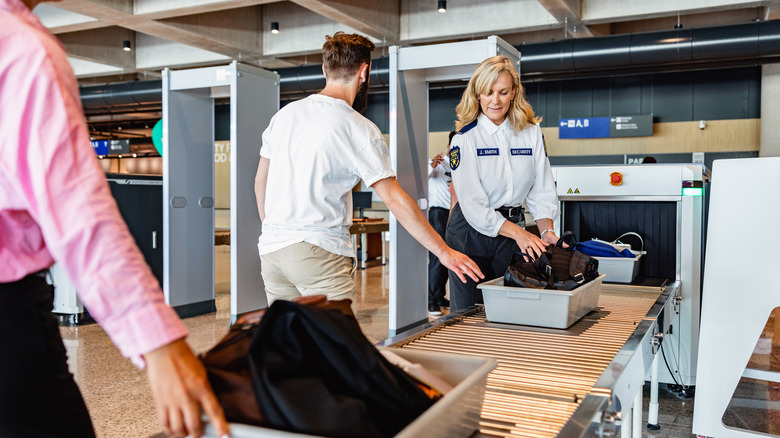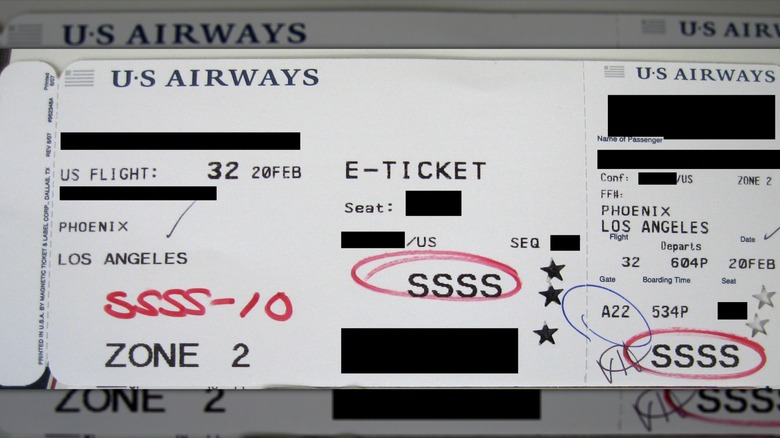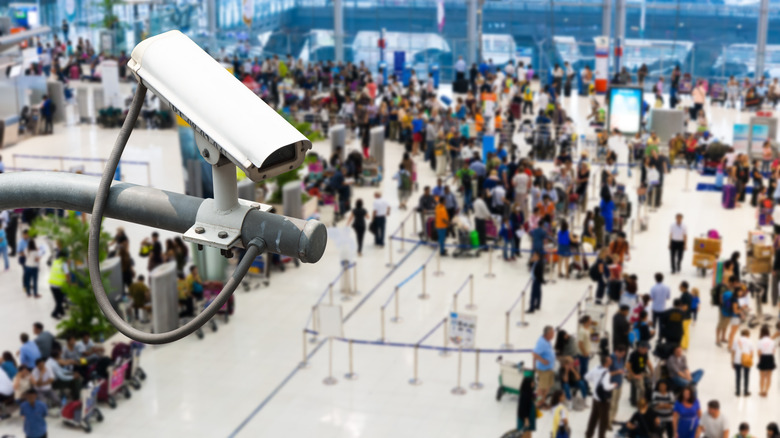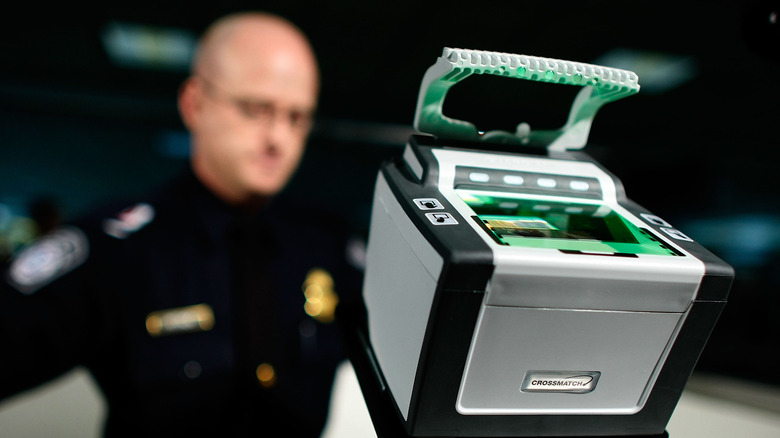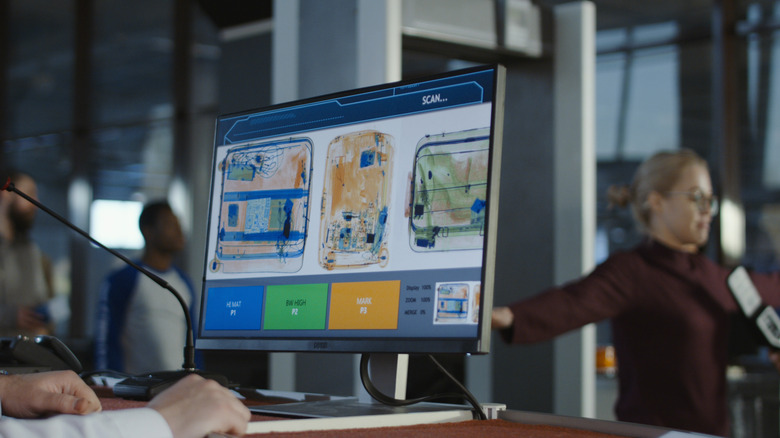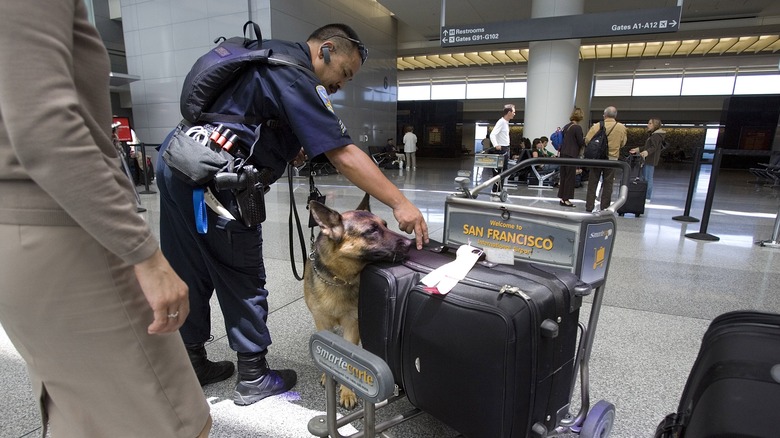Additional Airport Screening Isn't Totally Random. Here's Why You May Have Been Selected
For many travelers, undergoing additional screening at the airport can be a confusing and sometimes unsettling experience. While it's common to hear that these extra security measures are random, the reality is more complex. Beyond sheer chance, various factors can influence why certain passengers are selected for additional screening. Understanding these factors can help demystify the process and prepare you for what to expect.
First, it's essential to recognize that while randomness is a component of security screening processes, it's not the sole factor. Airports and airlines operate under stringent security protocols guided by regulations from national and international security agencies. The TSA designed these protocols to maximize safety while minimizing risk, using a combination of random selection and specific criteria to identify passengers for additional checks.
The history of transportation security is defined by some grave security-related events, such as the September 11 attacks in 2001 and the Underwear Bomber incident in 2009. These terrible incidents made it clear that security measures must be integral to the travel experience to ensure the safety of passengers, aircraft crew, and airport employees. As a result, new technologies (such as facial recognition and airport body scanners), rules (e.g., the 3-1-1 liquids and shoe removal), and government policies (like the Aviation and Transportation Security Act in 2001) were implemented to make travel safe for everyone. One of these measures is the random security screening. It can happen at any stage of the airport security proceeding, from check-in to the boarding area itself.
Suspicious travel patterns
In the U.S., there are 92 suspicious travel behaviors that can increase the likelihood of being selected for additional airport screening. One of these is frequent travel to destinations considered high-risk by security agencies. These dangerous countries might be associated with terrorism, political instability, or criminal activity. Other red-flag travel behaviors include booking flights at the last minute, purchasing one-way tickets without a clear return plan, and short trips to distant countries, followed by immediate returns. These patterns suggest that a traveler might be attempting to evade detection or involved in activities requiring such irregular travel. Itineraries that include indirect routes, multiple airlines, or unnecessary connections (especially in countries with which the U.S. doesn't have good diplomatic relations) can also trigger further examination.
The payment method and how flights are booked also come into play. For instance, using cash for last-minute international flights might be seen as an attempt to remain anonymous. If a passenger tries to print a boarding pass themselves and it states that they can only do so at the airport, they have likely been flagged. A boarding pass with the letters "SSSS" written on it can also indicate the passenger has been chosen as a "Secondary Security Screening Selectee." This means additional screening procedures at the airport, which may include a thorough check of your carry-on baggage, swabs for trace explosives, and full-body pat-downs.
[Image by Definitelynotdodgy via Wikimedia Commons | Cropped and scaled | CC BY-SA 3.0]
Behavioral detection
Security personnel are trained to identify a range of behavioral indicators that may be associated with stress, deception, or hostile intent. These indicators can include non-verbal cues, such as avoiding eye contact, excessive sweating, fidgeting, or inconsistent conduct when interacting with security staff. There are some involuntary reflexes TSA considers a warning behavior, like yawning, coughing, whistling, and blinking. When these behaviors become excessive in the security line, it can make someone a target. That said, switching lines over and over is another red flag.
Inappropriate attire is something security agents watch out for, too. Another is if someone looks as though they are dressed in disguise. Verbal cues might involve conflicting explanations of travel plans or nervous responses to routine questioning. Agents will certainly take notice when a passenger talks in an excessive, distracting, or otherwise suspicious manner that is either vulgar or indicative of an emergency.
Behavioral detection relies heavily on the skill and training of security personnel. Officers are trained to engage travelers in casual conversation while observing for signs that may warrant further scrutiny. SPOT, an acronym for Screening of Passengers by Observation Techniques, is a process that TSA agents and Behavior Detection Officers follow while looking out for those 92 suspicious behaviors. Although some of these seem mundane, a TSA statement via The Intercept declares that "Behavior detection ... is vital to TSA's layered approach to deter, detect and disrupt individuals who pose a threat to aviation."
Surnames and false positives
One of the more perplexing and frustrating experiences is being screened due to a surname that matches or closely resembles those on the security watchlist. The FBI's Terrorist Screening Center (TSC) maintains various lists hosted in The Terrorist Screening Database (TSDB). One such list contains names and personal details of individuals involved (or purported to be) in criminal activities; they are classified as "Known or Suspected Terrorists (KSTs)." Others are the "No Fly List," "Selectee List," and "Expanded Selectee List."
When booking a flight, passenger names are cross-referenced against these watchlists as part of pre-flight security checks. Problems arise when innocent travelers have names that are common or similar to those on these watchlists. This situation can lead to false positives, where individuals without connection to criminal activities are flagged for additional scrutiny. The impact is particularly pronounced for travelers with common surnames or those from certain ethnic or cultural backgrounds where name similarities are more likely.
Security agencies and airlines know the challenges of false positives and have implemented measures to minimize their impact. For example, the TSA offers a redress process through the DHS TRIP (The Department of Homeland Security Traveler Redress Inquiry Program), allowing individuals who believe they have been incorrectly matched to a watchlist to seek clarification and correction. Additionally, providing full names, middle names, and dates of birth when booking can help reduce the likelihood of a false match.
Physical and electronic triggers
Physical and electronic triggers are pivotal in determining which passengers are selected for additional screening. These triggers are specific items or anomalies detected during the initial screening processes that prompt further inspection. The most straightforward physical triggers are prohibited items in a passenger's luggage or on their person. These can range from obvious security threats, such as weapons or explosive materials, to less obvious items, like certain liquids, gels, and aerosols exceeding allowed limits.
Items that are unusual for a regular traveler can also trigger additional scrutiny. This might include equipment that could be misused on an aircraft, even if not explicitly prohibited (such as sharp objects with special TSA rules) or a large volume of pills that are not in their original packaging. Luggage packed in a way that blocks X-ray images or appears to conceal items may also lead to further checks. Dense materials, cluttered packing, or layers of electronic devices can obscure views, making it difficult for security personnel to assess the contents accurately.
Electronic devices that fail to turn on or show signs of tampering may raise suspicions of being modified for prohibited purposes. Security protocols require these devices to undergo additional inspection to ensure they do not pose a risk. Anything that even remotely resembles an IED (Improvised Explosion Device) is instantly flagged. Items made from dense materials that prevent X-rays from passing through can trigger alarms. This includes certain types of metal, like lead.
Random checks as a deterrent
Random airport security checks are a critical psychological and strategic deterrent against potential threats. The unpredictability of being selected for additional screening, regardless of any specific risk indicators, adds a layer of complexity for anyone attempting to circumvent security measures. Moreover, random checks ensure that security measures focus not solely on identifiable threats but also on potential unknown threats. By occasionally selecting passengers who don't exhibit any obvious risk signs, security systems can catch someone dangerous who might otherwise slip through. Random checks also distribute security measures more evenly across all passengers, helping to mitigate perceptions of profiling or discrimination.
To reduce the chances of random checks, ensure your travel documents are in order. You should also confirm that your name is correctly spelled across all booking information to avoid matching with watchlist entries. Enrolling in trusted programs like TSA PreCheck and Global Entry can reduce the likelihood of additional screening, though they do not eliminate it entirely.
While you shouldn't alter lawful travel plans out of fear of additional screening, being mindful of how your travel behavior might appear to security agencies can prepare you for potential extra checks. Familiarize yourself with current regulations regarding what you can carry and how to pack electronics and liquids. If selected for additional screening, staying calm, polite, and cooperative can make the process smoother for you and the security personnel.
